PEA B-52H StratoFortress TurboProps: A War-Driven Evolution
The PEA B-52H StratoFortress TurboProps is a radical reengineering of the legendary B-52H, developed in response to the prolonged Taiwan War. This conflict underscored the need for long-endurance strategic bombers with enhanced fuel efficiency to support sustained operations in the Pacific. By replacing traditional jet engines with high-performance turboprops, the U.S. Air Force sought to extend the bomber’s range, improve fuel economy, and reduce operational costs—all while maintaining its formidable payload capacity.
Development Driven by the Taiwan War
As the war over Taiwan intensified, the U.S. faced severe logistical challenges in the vast Pacific theater. Aerial refueling assets were stretched thin, and high fuel consumption among jet-powered bombers limited their effectiveness. The PEA B-52H TurboProps was conceived as a solution to these constraints, offering unmatched endurance and lower fuel dependency while maintaining the B-52's strategic role.
Design and Engineering Innovations
- Turboprop Powerplant
Equipped with four high-power turboprop engines, each producing 12,500 horsepower, offering significant fuel savings over traditional jet propulsion.
- Advanced Propeller System
Features six-blade Scimitar-style propellers with a 55-inch diameter and 3.0x thickness, designed for optimal thrust, efficiency, and reduced noise signature.
- Structural Adaptations
While the B-52 airframe remains largely unchanged, modifications to wing aerodynamics and engine mounts improve performance at medium altitudes and lower speeds.
Performance and Strategic Capabilities
Extended Range: With a fuel capacity of 10,039 gallons, the B-52H TurboProps can remain airborne for extended periods, reducing the need for frequent aerial refueling.
Operational Weight: At 35,427 lbs, it retains the ability to carry a full complement of conventional and nuclear payloads.
Mission Adaptability: Designed for long-range bombing, maritime patrol, electronic warfare, and intelligence gathering, making it ideal for sustained conflict operations.
Why the U.S. Chose This Design
- Sustained Combat Operations in the Pacific
The Taiwan War exposed the logistical limitations of jet-powered bombers, which required frequent aerial refueling.
Turboprop engines allowed the B-52H to loiter over contested areas for extended durations, supporting persistent strike and reconnaissance missions.
- Fuel Efficiency and Cost Reduction
Jet fuel shortages and high costs prompted the search for alternative propulsion methods.
Turboprops consume significantly less fuel, reducing strain on supply lines and making long-range missions more viable.
- Enhanced Maritime and ISR Capabilities
With lower-speed endurance, the modified B-52H became an effective platform for maritime patrol, anti-submarine warfare, and surveillance operations over the Pacific.
It could be used in electronic warfare roles, disrupting enemy communications and radar networks.
- Strategic Presence and Psychological Warfare
The B-52H’s endurance and payload capacity reinforced U.S. deterrence in the region.
Its ability to remain in contested airspace for extended periods signaled American resolve and military superiority.
General Characteristics
Predecessor: [PEA] B-52H StratoFortress
Created On: Android
Wingspan: 141.7 ft (43.2 m)
Length: 121.2 ft (36.9 m)
Height: 30.9 ft (9.4 m)
Empty Weight: N/A
Loaded Weight: 35,426 lbs (16,069 kg)
Performance
Horsepower-to-Weight Ratio: 1.411
Wing Loading: 25.9 lbs/ft² (126.6 kg/m²)
Wing Area: 1,366.6 ft² (127.0 m²)
Drag Points: 17,965
Parts and Components
Number of Parts: 72
Control Surfaces: 5
Performance Cost: 519
Conclusion
The PEA B-52H StratoFortress TurboProps was a direct response to the Taiwan War’s operational challenges, providing unmatched endurance, fuel efficiency, and strategic versatility. While sacrificing speed, this design allowed the U.S. to sustain prolonged air campaigns, bolster deterrence, and adapt to modern warfare demands in the Pacific theater.
Thanks to CHATGPT
Specifications
General Characteristics
- Predecessor [PEA] B-52H StratoFortress
- Created On Android
- Wingspan 141.7ft (43.2m)
- Length 121.2ft (36.9m)
- Height 30.9ft (9.4m)
- Empty Weight N/A
- Loaded Weight 35,426lbs (16,069kg)
Performance
- Horse Power/Weight Ratio 1.411
- Wing Loading 25.9lbs/ft2 (126.6kg/m2)
- Wing Area 1,366.6ft2 (127.0m2)
- Drag Points 17965
Parts
- Number of Parts 72
- Control Surfaces 5
- Performance Cost 519

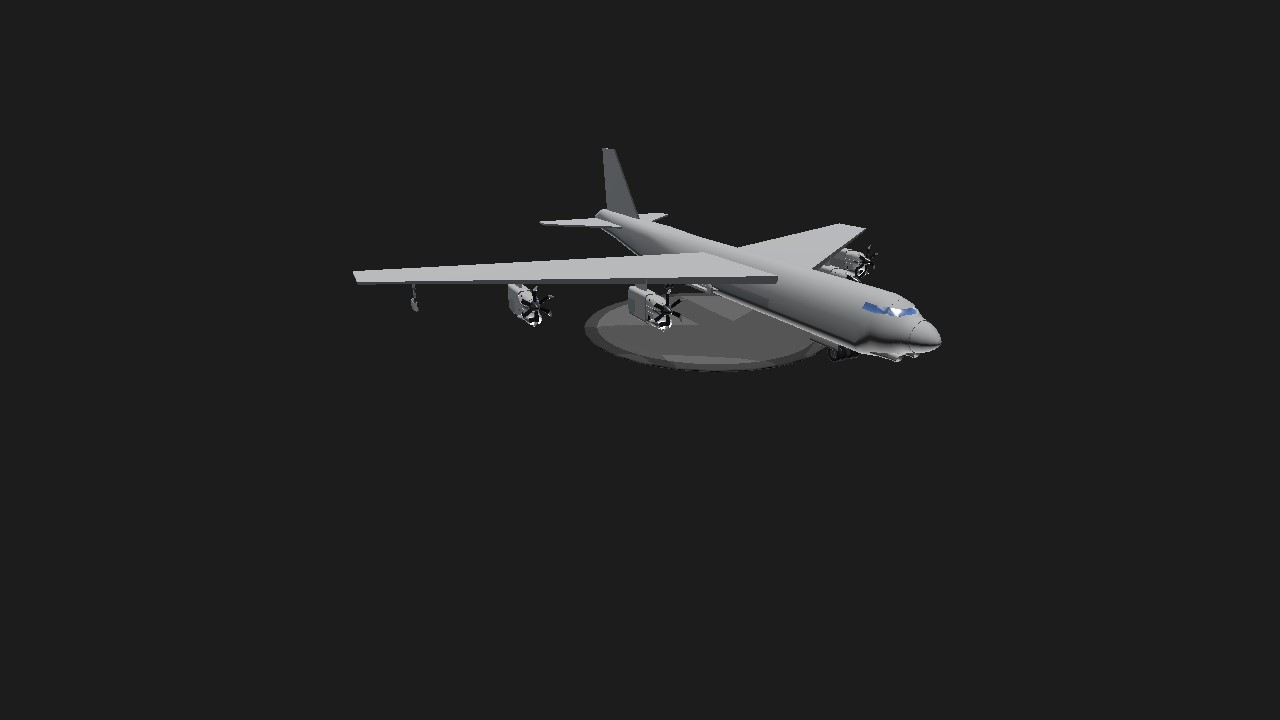
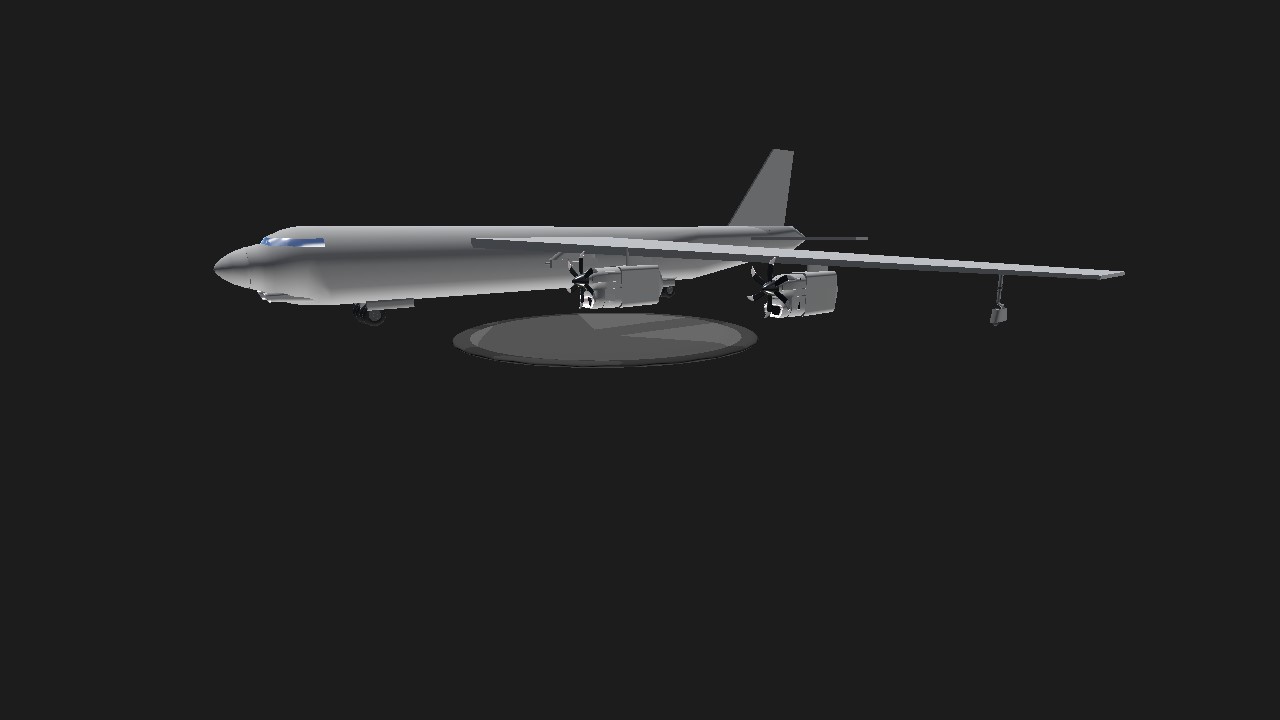
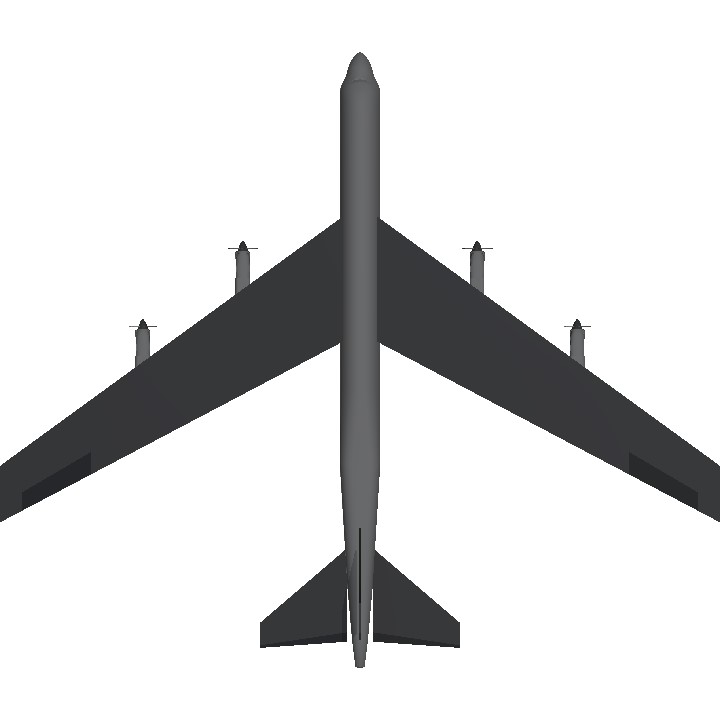
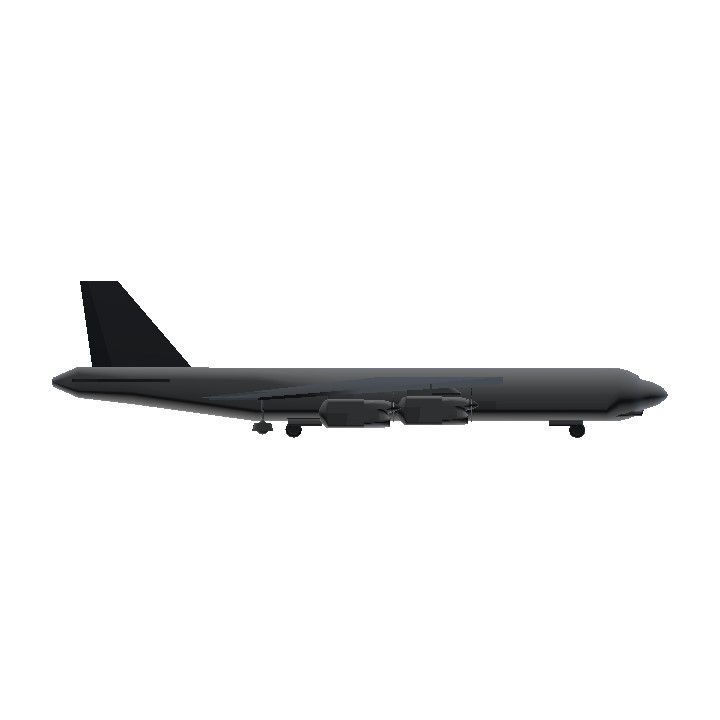
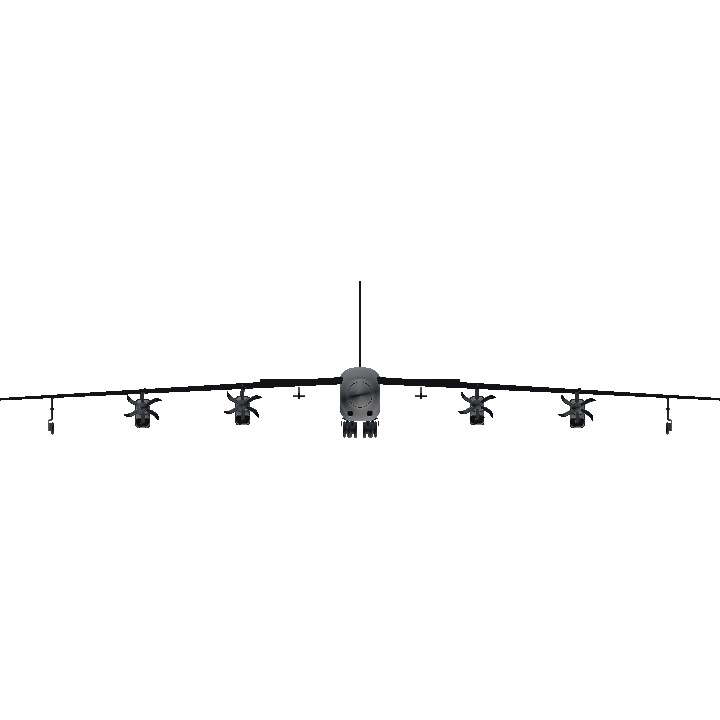
Thanks to @PedjoeangPatriot for the B-52